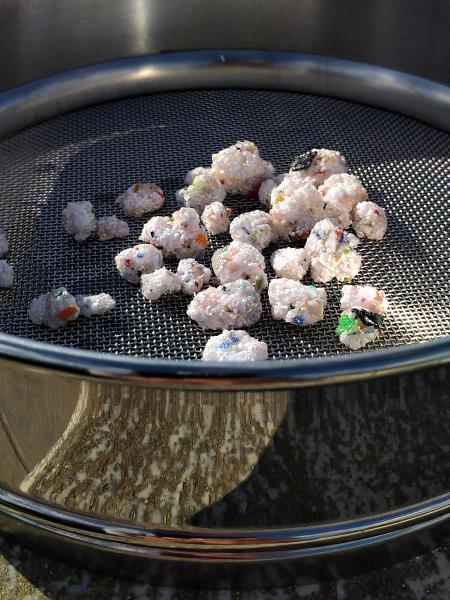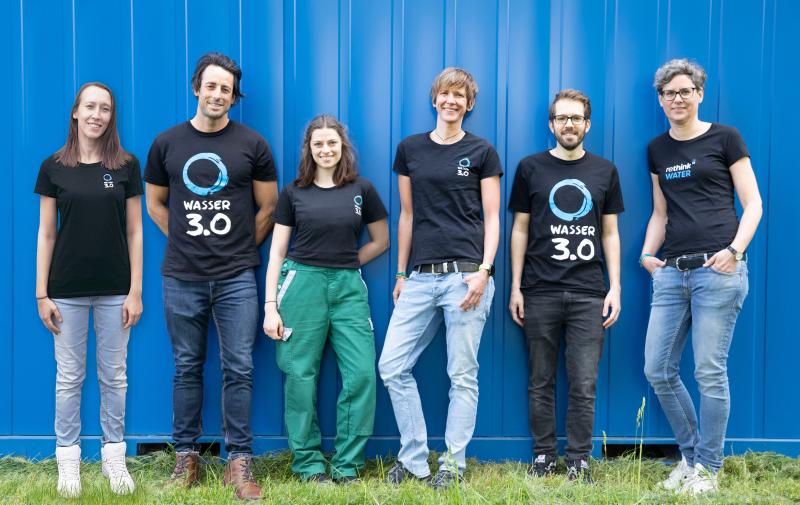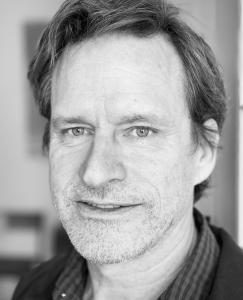German company fights plastics water pollution by turning tiny particles shed from cosmetics and car tires into white lumps that can be easily removed from waterways
Katrin Schuhen is a chemist, inventor and entrepreneur. She’s also a non-conformist who likes going her own way.
After a stint as a junior professor at the University of Koblenz-Landau in Germany, Katrin had an idea for an invention that could change the way microplastic pollution is removed from water— addressing a big global problem.
She didn’t want to start a normal for-profit company and plunge into what she calls “the shark pool” of the water sector. She wanted to create an organisation as unique as her invention.
She decided to create a non-profit company “where every profit is directly reinvested in our own research. It's like a university without this whole bureaucracy around.”
Though the idea had been germinating for some time, the new company, Wasser 3.0, was incorporated in 2020 as a non-profit, green-tech company focused on green technology and driven by research and development. It would incorporate a sustainable approach to business, and use every tool at its disposal to keep water clean. Everything was in line with Katrin’s philosophy of following her own path.
Microplastics pollution is a growing problem. These tiny particles come from products such as cosmetics and vehicle tires. They are shed into the water when we wash polyester clothing and are produced through many types of manufacturing. Most microplastics end up in the oceans, but they have been found in the snows of Mount Everest as well as in our bodies.
Filtration is the conventional way to remove microplastics from water, but this is laborious and expensive. Katrin turned the problem on its head.
Detect, remove, reuse
She invented a compound called Wasser 3.0 PE-X that acts as a clumping agent. Put water in a tank, create a vortex —like the swirling water in a drain — add the compound, and then watch as the microplastics and PE-X form white popcorn-shaped lumps that rise to the surface to be skimmed off. PE-X is a harmless hybrid silica gel that can be tailored to the type of particles present in the water.
The Wasser 3.0 approach involves three steps: detect, remove, reuse. The first is gathering data to understand the type and extent of pollution involved. The second is the removal process. The third is reusing the agglomerates that result from microplastics extraction —as an element in pavement for roadways, for example.

Clumps of microplastics
Wasser 3.0 is conducting a long-term study for continuous operation at a municipal wastewater treatment plant in Landau-Mörlheim and has a paper-processing factory as one of its first clients with continuous operation. Pilot projects are in place in other sites. For Katrin, the greatest potential for Wasser 3.0 is in stopping microplastics pollution at the source, working with companies to clean water used in industrial processes so that it never enters rivers or seas.
“We are looking for the early adopters, the companies who want to be part of the transformation from now to the future,” Katrin says. “We have industries who are working with us doing the piloting, doing the long-term studies, bringing all the data together.”
Many companies are moving toward corporate responsibility, and there could be stricter regulations on the horizon, but Katrin says the business advantages of the Wasser 3.0 approach are just as appealing.
“Responsibility is there on the one hand, and the other way is the economic benefit,” she says. “Because if you can recycle and reuse water, or other substances, and you can directly reduce the costs, then the industries become interested in the technology.”
Wasser 3.0 was one of the finalists in the 2021 Social Innovation Tournament, sponsored by the European Investment Bank Institute to support entrepreneurs who are helping the environment and society. The company has won numerous other prizes, including an Aquatech Innovation Award and the Next Economy Award from the German Sustainability Awards.
Inspiring action
While Wasser 3.0 is continuing research and development, it is also dedicating resources to education. Team WASoMI, which stands for WASser ohne MIkroplastik in German and means Waters without Microplastics, is a project to share the knowledge of the Wasser 3.0 team and raise awareness about plastic pollution.

The team behind Wasser 3.0
“Right now we are building a virtual learning environment on polymers, plastics, and microplastics,” says Silke Haubensak, in charge of communications and organisation at Wasser 3.0. “As a start, the program is designed for students in 7th to 9th grade, but the eventual goal is to scale up the program for wide distribution.”
The project received €70.000 in funding through the Deutsche Postcode Lotterie, and Wasser 3.0 is looking for sponsors and other funding.
For Katrin, creating an organisation that mirrors her vision of independence while pursuing sustainability remains paramount.
“In the end, everyone wants to become a game changer. But the thing is, how to reach this point?” Katrin says. “A path is something you create as you walk it. This is this is how we deal with the problems in the water. And this is how we deal with the problems in the system. And this is how we find our way out.”
